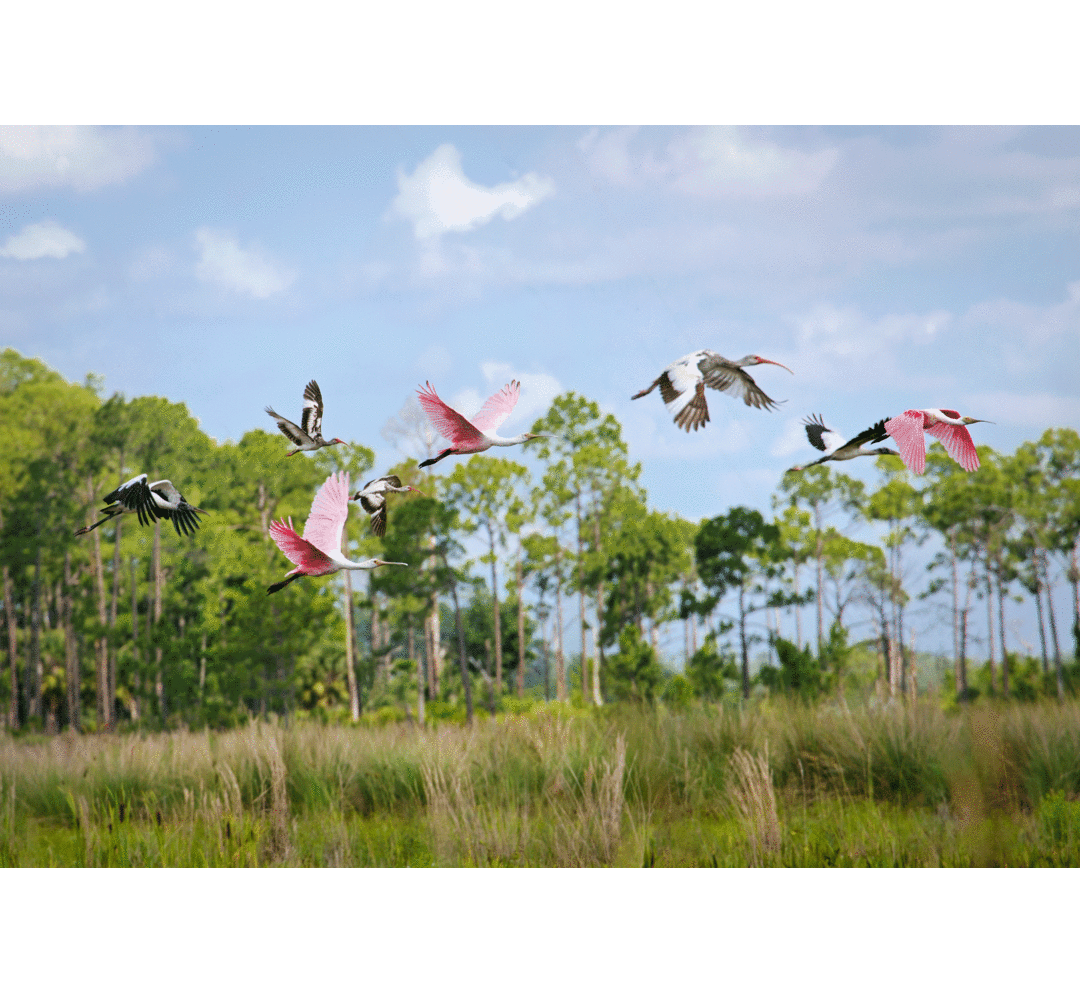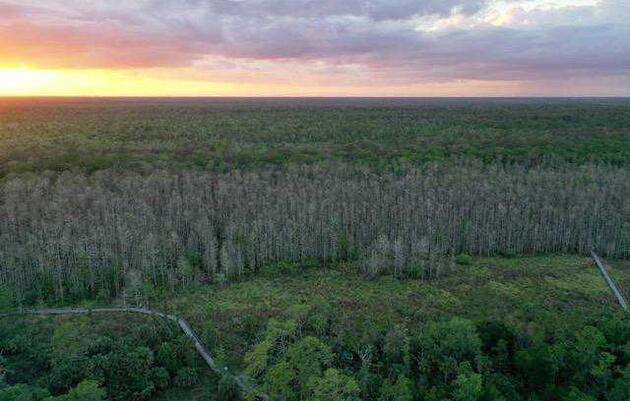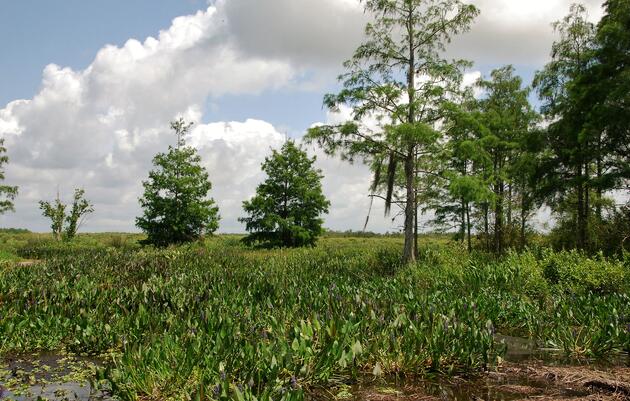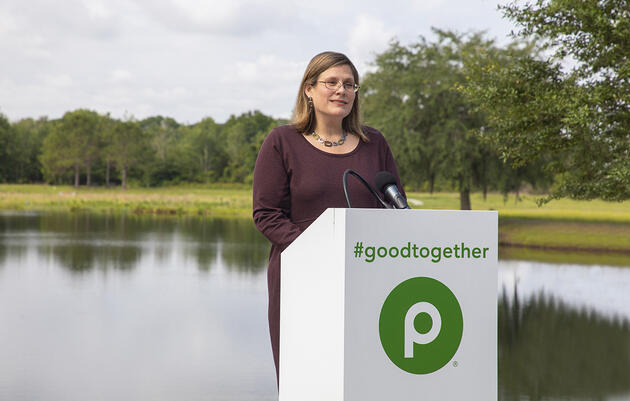Corkscrew Swamp Sanctuary’s marshes and prairies are under siege. A plague of thirsty, woody invaders is marching across our freshwater wetlands. These marshes and prairies were once dominated by diverse grasses and sedges that provided habitat for a host of wildlife; from the tiny least killifish to the threatened wood stork. Now, Carolina willow, a woody shrub, is replacing those grasses and has been spreading because of altered seasonal water conditions, or hydrology, and a lack of fire. Audubon aims to restore these vital wetlands and we need your help.
We have surpassed a major milestone of more than 1,000 acres under restoration. We now set our sights on continuing this ambitious effort and have identified roughly 1,000 acres remaining of inundated marsh and prairie habitats that will require restoration. We will continue to prioritize fundraising for this effort and aim to mulch about 200 acres per year, which carries a cost of about $3,500 per acre.
"Restoring and maintaining Corkscrew Swamp Sanctuary’s native habitats is our most important responsibility. Seeing wildlife flourish within our wetlands is a welcomed sign that our conservation team’s efforts to provide a healthy ecosystem are working and demonstrates that the investments made by our supporters are worthwhile."
- Shawn Clem, PhD, Research Director and Interim Director of Conservation
The project is a real path to recharge the natural systems fundamental to the quality of water in Southwest Florida; to keep Corkscrew Swamp a sacred sanctuary for wildlife and the 100,000 people who visit each year; and to help the community change the future of water in our region.
For more information about supporting this effort, please contact Sarah Sauerland, at 239-348-9151 ext. 120.
Why is this important? Marshes and prairies support our wading birds
Less than 65 years ago, Southwest Florida was home to the largest nesting colony of Wood Storks in the United States, hosting as many as 6,000 nesting pairs. At the time, our area was blanketed by wetlands with water levels that fluctuate over the year, rising during the summer rainy season and drying out in the winter. These short hydroperiod wetlands provide an abundance of small prey fish and seemingly endless foraging habitat for Wood Storks, Roseate Spoonbills, Little Blue Herons, and more. These wetlands also naturally process nutrients and manage water levels for Southwest Florida, filtering out nutrients before they reach the Gulf of Mexico and absorbing the rainwaters that inundate Southwest Florida every year.
Today, our ecosystem looks dramatically different - short hydroperiod wetlands have diminished by about 80%. Because of poor water management and invasive plant species, many of the wetlands that remain are not functioning anywhere near full potential.
As a result, Wood Stork nesting productivity within Corkscrew Swamp Sanctuary has dropped approximately 90%; more nitrogen and phosphorus are flowing directly into the Gulf of Mexico resulting in harmful algal blooms of blue-green algae in freshwater and a significant increase in red tide in coastal waters. Finally, groundwater levels have dropped, increasing the risk of catastrophic fires. It is imperative that we stop the destruction of wetlands and restore those that remain to full function.
Audubon's Corkscrew Swamp Sanctuary was recognized as a Wetland of Distinction by the Society of Wetland Scientists in spring 2019. The Wetland of Distinction initiative was created in 2017 “to promote awareness, appreciation, and knowledge of some of the country’s most ecologically sensitive landscapes."
With your generous support, we can restore our marsh and prairies to highly productive and biologically diverse wetland systems that clean nutrient pollution from our groundwater and watershed, reduce the risk of catastrophic wildfires in our community, hold floodwaters during severe weather events, and provide habitat to many of our threatened and thriving wading birds, amphibians, reptiles, and mammals that call these wetlands home.
Catch up on past updates:
Dec. 1, 2019 Restoration Update by Shawn Clem, Ph.D.
Oct. 30, 2018: A Checkup of Marsh Restoration by Jason Lauritsen
June 22, 2018: Initial Restoration Reflections by Jason Lauritsen












